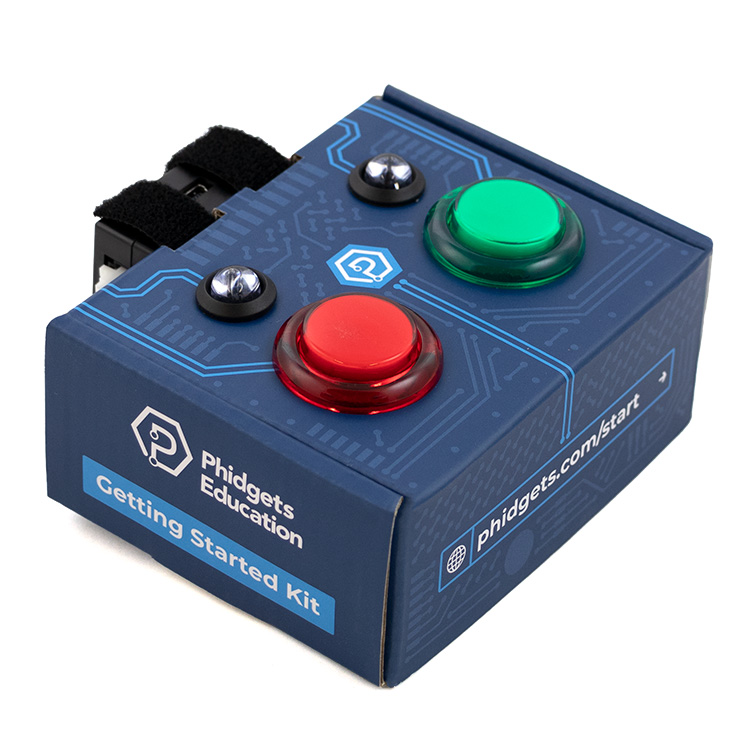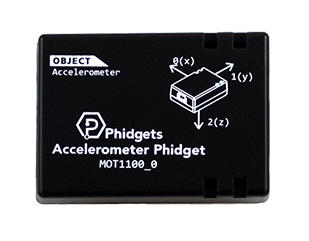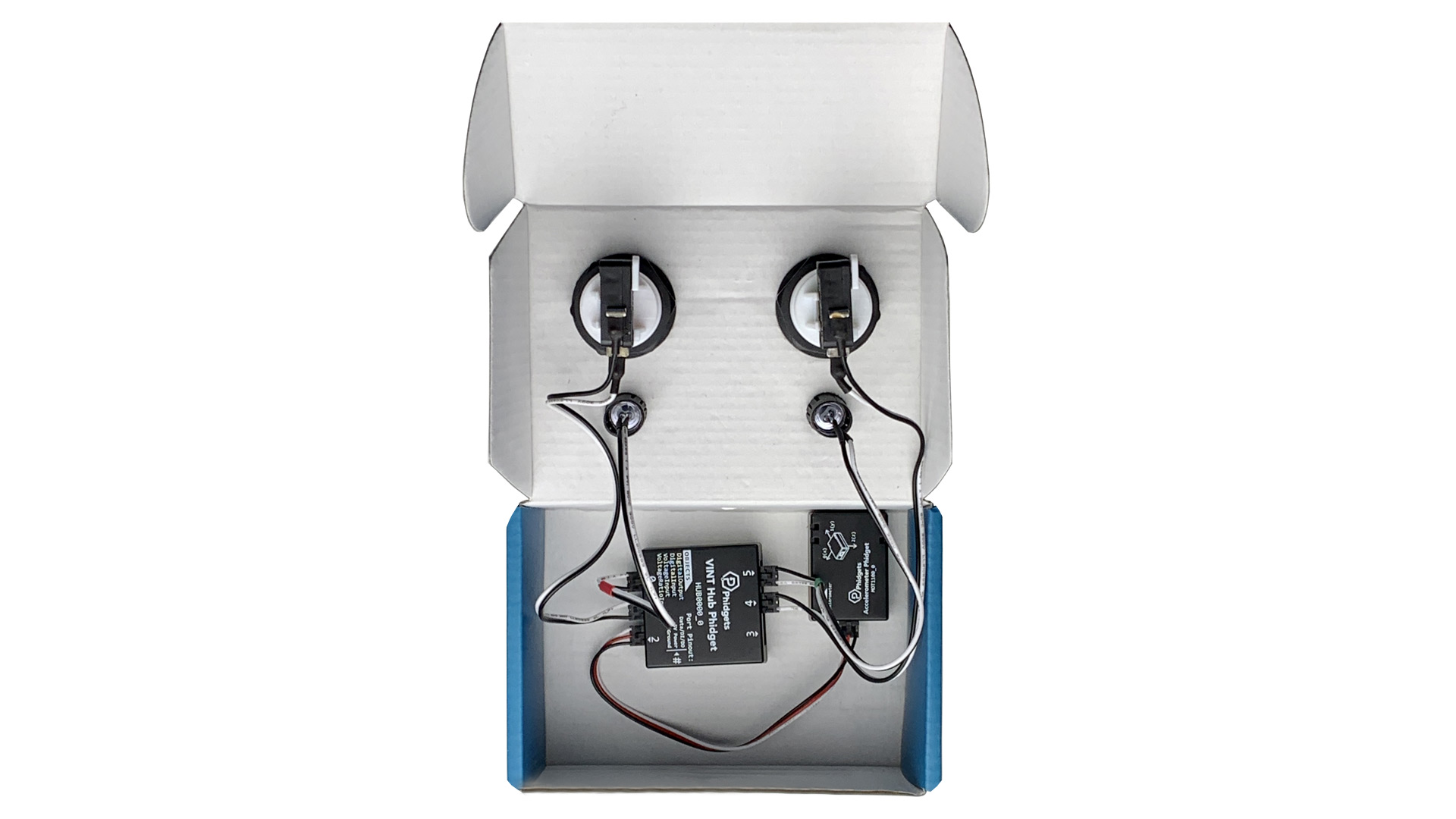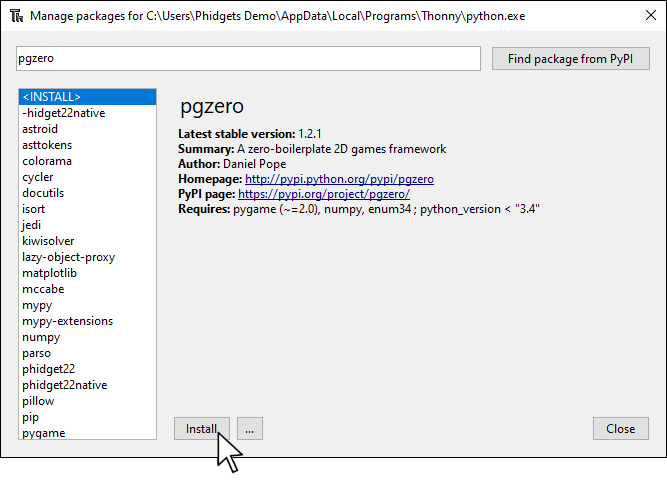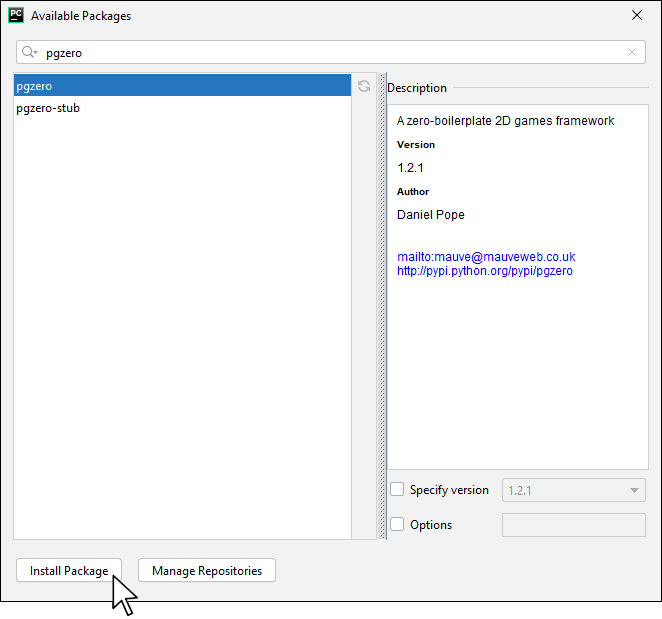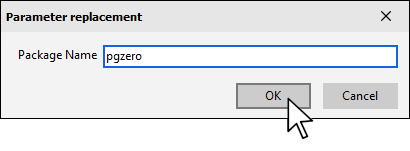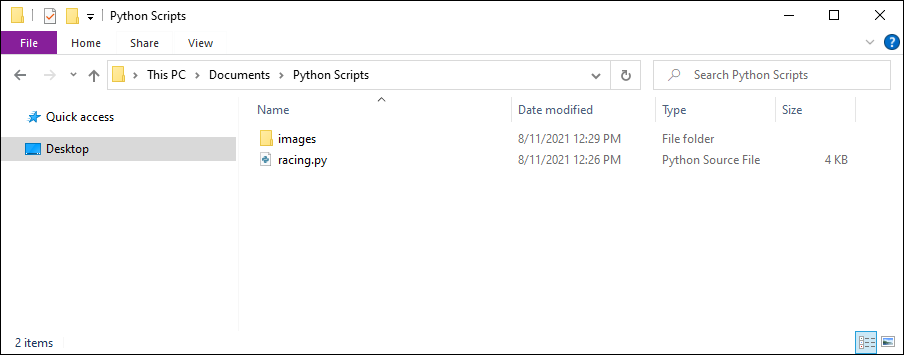Prerequisites
You should review the following before moving on:
Setup
Replace the Humidity Phidget in your Getting Started kit with the Accelerometer Phidget (or any Phidget with an Accelerometer).
Install Pygame Zero
In order to use Pygame Zero, you first have to install it. You do this in the same way you previously installed the Phidget22 library. Simply navigate to your package manager, search for pgzero and press install!
PyCharm
If you're using PyCharm, select File > Settings > Python Interpreter and use the + symbol to install pgzero.
PyScripter
If you're using PyScripter, select Tools > Tools > Install Packages with pip and enter pgzero.
Write code (Python)
Copy the code below into your python script racing.py.
#Add Phidgets Library
from Phidget22.Phidget import *
from Phidget22.Devices.Accelerometer import *
from Phidget22.Devices.DigitalInput import *
from datetime import datetime
from sys import exit
import pgzrun
#Set Game Board Dimensions
WIDTH = 700
HEIGHT = 700
car = Actor('car', center=(WIDTH / 2, HEIGHT / 2))
background_1 = Actor('road')
background_1.right = WIDTH
background_2 = Actor('road')
background_2.right = -1400
game_speed = 1 #Speed at which everything moves
def increase_game_speed():
global game_speed
game_speed += 1
clock.schedule_interval(increase_game_speed, 10)
def draw():
screen.clear()
background_1.draw()
background_2.draw()
car.draw()
#Draw helpful text
screen.draw.text("TIME: " + str(int(timer)), (20, 20), fontsize=40, owidth=1)
screen.draw.text("LEVEL " + str(game_speed), topright=(680, 20), fontsize=40, owidth=1)
initial_time = datetime.now().timestamp()
def update():
global timer
timer = datetime.now().timestamp() - initial_time
background_1.right += game_speed
background_2.right += game_speed
car.x += game_speed
#Reset background to original position once it leaves the area
if background_1.right >= WIDTH * 4: background_1.right = -1400
if background_2.right >= WIDTH * 4: background_2.right = -1400
#Turn the car
animate(car, duration=0.1, angle=(accelerometer.getAcceleration()[0] * 90))
#Move the car
if accel: animate(car, duration=0.1, pos=(car.x - (20 + level * 2 - abs(car.angle / 5)), car.y + (car.angle / 4)))
if reverse: animate(car, duration=0.1, pos=(car.x + (20 - abs(car.angle / 5)), car.y - (car.angle / 4)))
#End the game
if car.x > WIDTH or car.x < 0: exit()
if car.y > HEIGHT or car.y < 0: exit()
#Phidgets Code Start
def mapAcceleration(val):
try:
#for simple tilting, -1 to 1 is an appropriate range
minA = -1
maxA = 1
output = ((val - minA)/(maxA - minA) * WIDTH)
return output
except:
print("error")
#if sensor is out of range, return last position
return car.pos[1]
def accelerateHook(self, state):
global accel
if state: accel = True
else: accel = False
def reverseHook(self, state):
global reverse
if state: reverse = True
else: reverse = False
#Create
accelerometer = Accelerometer()
redButton = DigitalInput()
greenButton = DigitalInput()
#Address
redButton.setIsHubPortDevice(True)
redButton.setHubPort(1)
greenButton.setIsHubPortDevice(True)
greenButton.setHubPort(4)
#Subscribe to Events
greenButton.setOnStateChangeHandler(accelerateHook)
redButton.setOnStateChangeHandler(reverseHook)
#Open
accelerometer.openWaitForAttachment(1000)
redButton.openWaitForAttachment(1000)
greenButton.openWaitForAttachment(1000)
#Set Data Interval to minimum | This will increase the data rate and allow for a more responsive controller
accelerometer.setDataInterval(accelerometer.getMinDataInterval())
#Phidgets Code End
pgzrun.go()
Run Your Program
Tilt your Getting Started Kit to steer, and press the buttons for acceleration and braking.
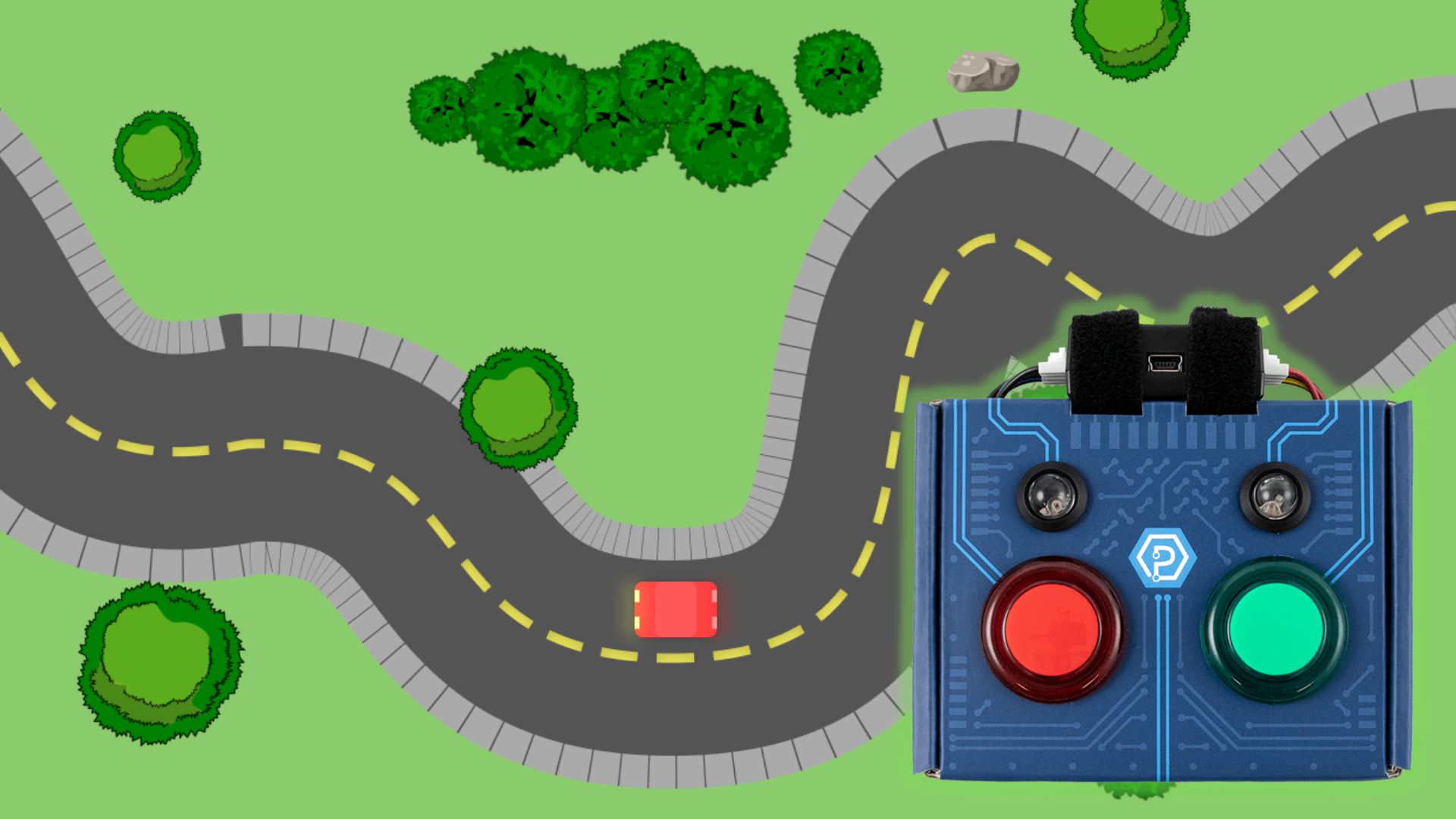
Code Review
Two backgrounds are used in order to create the scrolling effect. Every time a background goes off-screen, it jumps back to the left to be reused.
Practice
- Try to add sound effects to the game like when the car accelerates.
- Add a second car so you can play against someone else. Note: A second Getting Started Kit and Accelerometer Phidget will be required.
